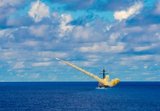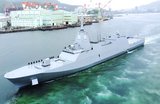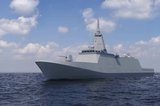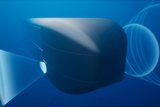SEA takes full control of JSK Naval Support
Rendered image of the Torpedo Launcher System to be installed as part of the CSC programme. (Photo: JSK Naval Support)
Cohort Group company SEA has completed the acquisition of the remaining 50% of Canada-based JSK Naval Support for an undisclosed sum.
SEA and Kaycom established JSK as a 50:50-owned company in April 2014.
UK-based SEA said the deal for full ownership will see it continue to provide technical expertise and support to JSK, ‘while expanding operations in Canada through recruitment’.
JSK delivers expert engineering and manufacturing capabilities, including in-service support to the Royal Canadian Navy and local defence contractors.
Specifically, the company has supported sonar and acoustic systems programmes for Victoria-class submarines in the Royal Canadian Navy.
JSK recently also won a place on the Canadian Surface Combatant programme with a contract to supply the torpedo launcher system aboard the first four vessels.
Related Programmes in Defence Insight
More from Naval Warfare
-
![NATO tests use of “undetectable, jam-proof” laser communication in maritime scenarios]()
NATO tests use of “undetectable, jam-proof” laser communication in maritime scenarios
As part of its effort to better prepare its capabilities for operations in contested and congested scenarios, NATO evaluated a Lithuanian ship-to-ship terminal designed to not be susceptible to enemy interference.
-
![Future of the Canadian Patrol Submarine Project is still unclear]()
Future of the Canadian Patrol Submarine Project is still unclear
The Canadian government remains tight-lipped on the timeline and funding required for the next steps of its Canadian Submarine Patrol Project, which should offer improved capabilities for the country’s navy.
-
![Mitsubishi eyes future with Australia’s Mogami selection]()
Mitsubishi eyes future with Australia’s Mogami selection
With Australia’s selection of the Mogami-class for Project Sea 3000, Mitsubishi is investigating local production in the next decade as potential export opportunities emerge.
-
![Thales’ new Sonar 76Nano could equip UK Royal Navy on anti-submarine warfare missions]()
Thales’ new Sonar 76Nano could equip UK Royal Navy on anti-submarine warfare missions
The new sonar is designed to equip uncrewed underwater vessels, with the potential to be used by the Royal Navy for its Atlantic Bastion and Atlantic Net missions.























